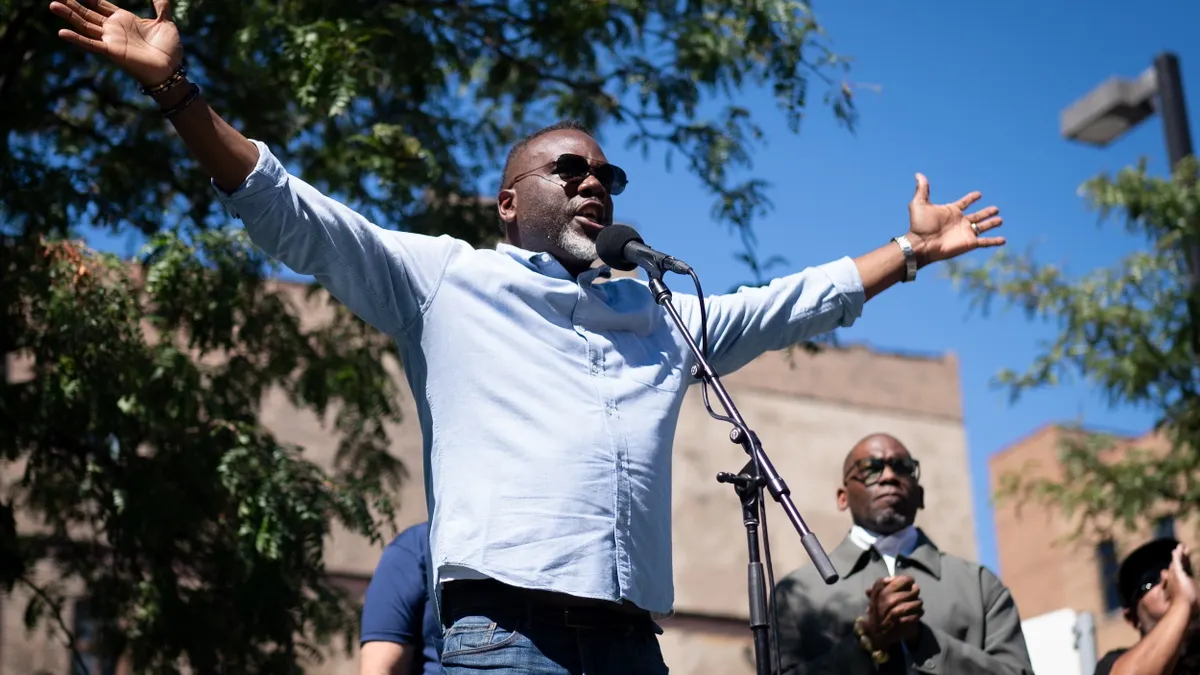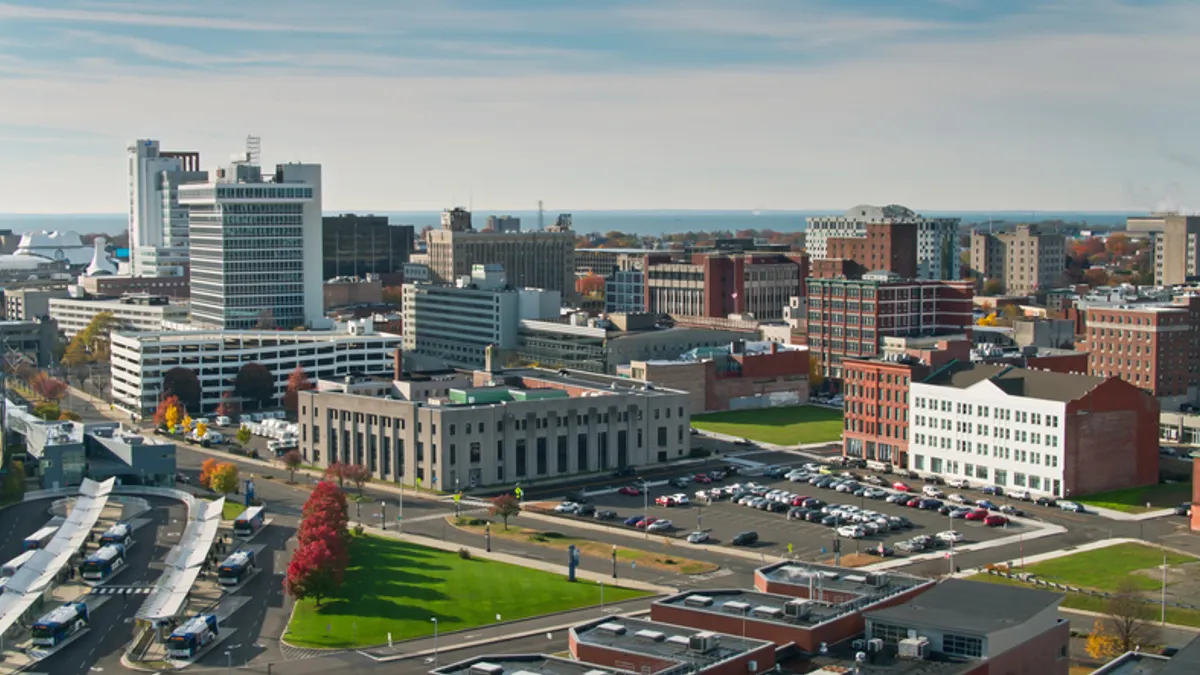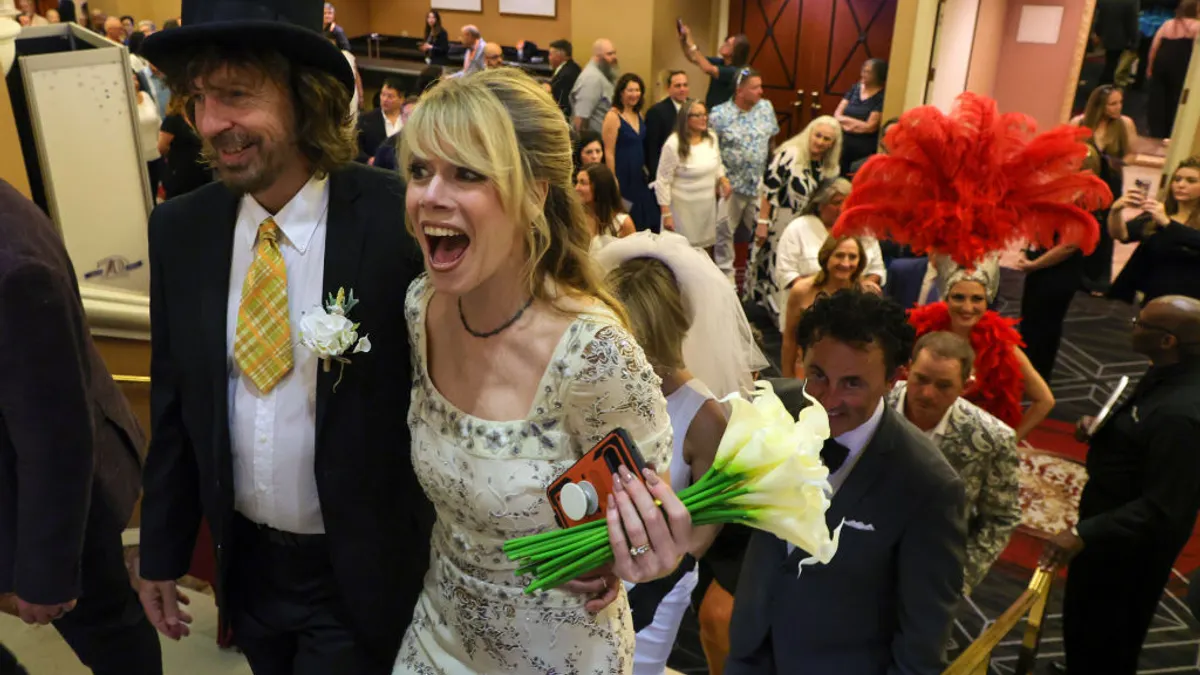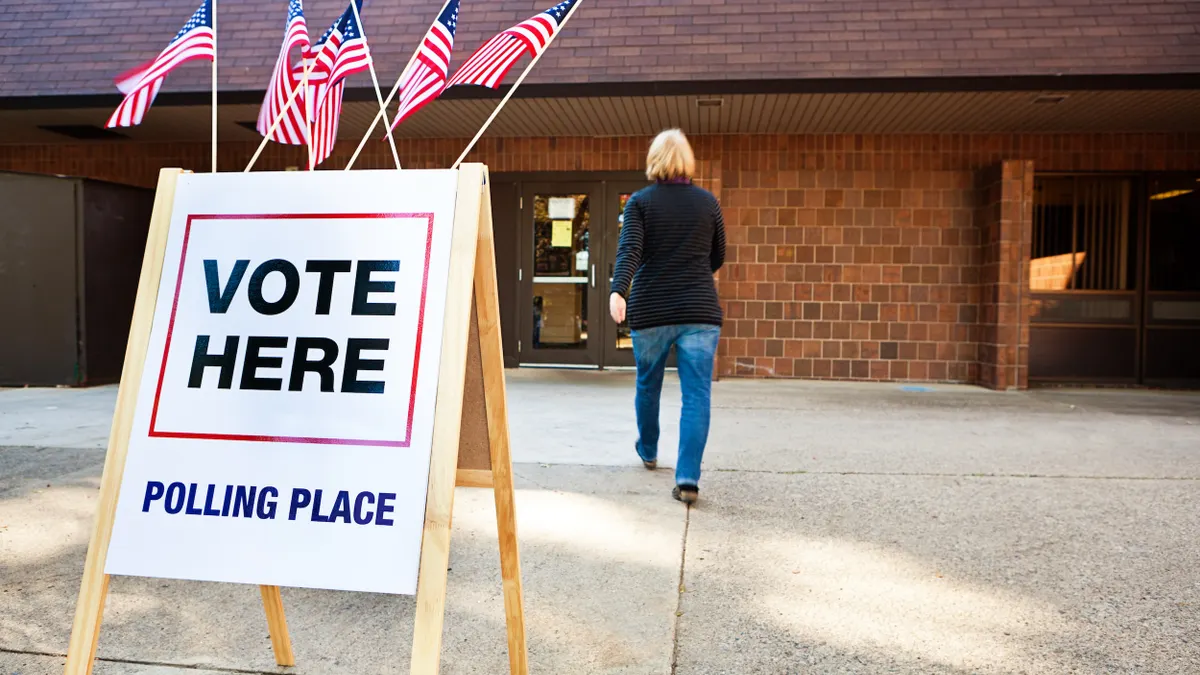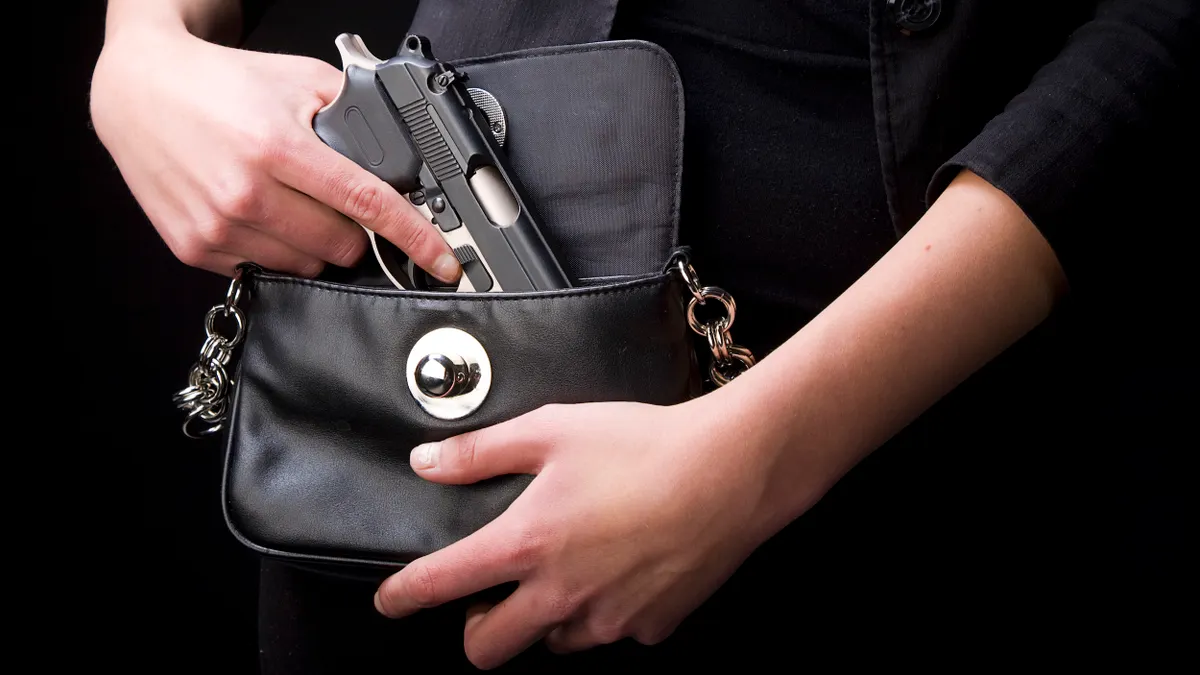Thanks to the record number of female candidates running for office this year, 2018 is being heralded as another “Year of the Woman.” But the trend isn't just affecting state and federal elections — it is also reshaping mayoral races across the country.
"Year of the Woman" was first coined in 1992 after more women won election to Congress than ever before. The moniker has seen a revival this year ahead of the mid-term elections, as female candidates step forward at various levels of government in reaction to President Trump, the Republican-led Congress, a conservative judiciary and state governments.
Experts said city-level offices could be experiencing a similar phenomenon, albeit spread over a longer period than just this year, showing more women are getting engaged in solving local problems.
"The worry is that we just don't have enough women running at every level, and people are neglecting the more local levels of politics,” Jean Sinzdak, associate director of the Center for American Women and Politics (CAWP) told Smart Cities Dive. "That's possibly changing as I think people are paying attention to politics in a different way than they have been in previous years. Civic engagement is feeling more intense than it has previously."
Tracking candidates and enthusiasm
Given the sheer size of the United States and the number of cities that elect a mayor, it is almost impossible to collectively track mayoral candidates each year. But it is possible to analyze data from a smaller sample of cities with populations of more than 30,000 and go beyond information on those currently in office.
Ballotpedia, which tracks elections at every level of politics in the U.S., has data on 26 mayoral races from this year — both on the ballot in November and contested at other times, as many municipal elections are — as well as for 23 mayoral races apiece in 2017 and 2016.
Based on an analysis of the general election races in those cities by Smart Cities Dive, there has been an uptick in female candidates. In 2016, eight women were candidates in the general election. That number was 14 in 2017 and swelled to 19 in 2018.
That includes incumbents Libby Schaaf, D, and Muriel Bowser, D, (running for re-election in Oakland, CA and Washington, DC, respectively), London Breed, D, who won the San Francisco race earlier this year, and challengers like Laura Morrison, D, in Austin, TX running against incumbents.
But, Sinzdak warned, the proportion of female mayors nationwide remains steady at around 15% and women remain under-represented at all levels of elected office, even with these encouraging signs.
“Not that it won't be a successful year,” she said. “I think a lot of people are relying on the numbers, and if the numbers are going to change dramatically. It's not going to happen in one election cycle, no matter how many women are running.”
Sinzdak notes there are other ways of measuring success. Beyond a count of names on ballots at the local level, both partisan and nonpartisan groups say they have seen a tremendous uptick in the number of women coming to them for advice on how to run for office.
In July, EMILY’s List said it had been approached by 40,000 women that wanted help running in the 2018 election cycle, with thousands at the city level. In comparison, the group, which supports pro-choice Democratic women candidates, said it had been approached by 920 women during the 2016 cycle, showing the explosion in interest after the last presidential election and concerns for the future.
"Oftentimes, the first place they look is in local offices in their community that can actually impact that,” Lindsay Crete, deputy director for state and local campaign communications at EMILY’s List, told Smart Cities Dive. "[It] can be as simple as that, but when they run, they win, and then they get into office and they put forward policies to change things.”
For its part, CAWP, which has run nonpartisan training sessions in its home city of Rutgers, NJ for almost 20 years, has also seen more women wanting advice on running for office. Sinzdak said its annual training, called “Ready to Run,” has had more than 250 attendees in each of the last two years, up from a typical average of 150 before, and that the energy has "all been on the Democratic side."
For Republicans, it's more complicated. Grassroots organization Republican Women for Progress warned earlier this year in The New York Times of a backlash against Republican female congressional candidates, even going so far as to tell them not to run and instead come back stronger in future cycles.
Despite the headwinds, there have been some positive signs for women in city races. New York Assemblywoman Nicole Malliotakis ran for New York City Mayor against incumbent Bill de Blasio as the Republican nominee, while Utah has received praise for encouraging conservative women to run for mayor of its various cities.
Meghan Milloy, a co-founder of Republican Women for Progress, said that Democratic candidates have been more inclined to play up their identities at all levels, and conservative women would do well to follow their lead.
"If we're going to have more female representation, we have to have women that are running because they are women and running on this pro-woman platform as opposed to just running and then by coincidence they happen to be a woman," Milloy told Smart Cities Dive. "I think we have to be proud of that, like so many of the Democrats are, and not shy away from it, which I think Republicans have in the past."
National, personal and historical narratives
The last time an election year was deemed to be the Year of the Woman, in 1992, it was judged to have stemmed from the controversial Senate confirmation hearings of U.S. Supreme Court Associate Justice Clarence Thomas and a reaction to male dominance of that chamber.
Similar headwinds appear to have been blowing since the 2016 election, Crete said, as more women express their opposition toward President Trump, as well as toward Republican control of legislative branches at various levels.
“A lot of these women across the country said, 'There's no way I can sit on the sidelines any more while changes are being passed both at the national level and the state and local level that are going to impact my family,'” Crete said.
And in a bid to differentiate themselves from the traditional candidate, female candidates across the board are playing up their personal narratives, whether it be their prior or current careers, military service, family life or other factors.
Sinzdak said that differentiation comes in part from the #MeToo movement, where powerful men including elected officials have been forced from positions of power after allegations of sexual assault and harassment. And that, even though it may take several election cycles to bring real results, is changing the political game, including in areas such as fundraising.
“You're seeing a lot more of the narrative, especially around the #MeToo movement,” she said. “You're seeing a lot of women candidates share their personal stories of abuse or harassment. Those things are changing the politics games for women candidates in ways that may not bear out in the numbers in terms of how many win.”
For mayoral candidates, that change takes a variety of forms. Phoenix Councilwoman Kate Gallego, D, said she was motivated to run in part because none of the 10 most populous U.S. cities have a female mayor. With a background in economic development, Gallego, who has served on city council since 2013, has already turned heads against opponent Daniel Valenzuela, D.
In an interview with Smart Cities Dive, Gallego said while she had been interested in a run already, large cities’ lack of female leadership made her even more motivated.
“One has to ask why it is so hard for women to be elected to mayors' positions,” she said. “I felt like maybe this year that barrier wouldn't be as restrictive as it has been in the past. It felt like with the national climate being the way it was, I could really get a fair shot.”
In a similar vein, Morrison is challenging incumbent Austin, TX Mayor Steve Adler, D, in November in a bid to return to city government, having served on city council from 2008 to 2014. She noted the city has only elected one female mayor in over 170 years and said that a new way of doing things is needed.
But Morrison said there are few differences on national issues between her and Adler, in keeping with a general trend that more progressive cities are looking to stand up to the federal government’s regulatory rollbacks on issues like climate change and instead lead the way.
“There's literally no difference between Steve and myself when it comes to national issues, in terms of where we stand,” Morrison said. “And as mayor, I would use the bully pulpit and ensure that our community values are expressed loudly and clearly and collaboratively with other folks around the nation and that we stand up for those values here in town and those people that live here.”
Research from the likes of the Pew Research Center suggests a majority of adults think having more women in Congress is a good thing, as they are more likely to cooperate across political divides and be less susceptible to corruption. Gallego said that could mark a dramatic shift, even at the city level, away from the politics of division.
“I think many women want to work more collaboratively, and I hope people are hungry for that right now in our politics,” she said. “We heard a powerful message from John McCain's funeral that he hoped people would work together more and across more divisions and party lines.”
And those who already won election this year have taken steps to show a renewed spirit of collaboration. Garland, TX Mayor Lori Barnett Dodson, D, was sworn in earlier this year and had the other members of city council stand behind her as she gave remarks after the ceremony.
“I asked that my council stand here behind me, with me,” she said in a speech. “This is us saying we’re a team, we will work together, and we’re all looking forward to going forward and moving the city forward, doing great things.”
All politics is local, still
Despite the swirling national headwinds, a desire to solve local issues is still a determining factor for women who want to run for office. And for many, that desire to help their communities can be motivated by the gridlock, partisanship and lack of cooperation at the national level.
For state-level offices, Virginia Del. Danica Roem, D, gained nationwide attention last year when she became the first openly transgender member of the Virginia House of Delegates, running a campaign on her knowledge of the local issues andwanting to fix one of the major thoroughfares in her district.
And at the city level, it is those local issues that continue to dominate for women running for mayor. Morrison said she is running to bring a new style of leadership to Austin and move away from what she feels is a “top-down” approach that leaves many people feeling left out. Morrison said she wants to help the city deal with a housing affordability crisis and add to its transit options, but more than anything she said she wants to bring people together.
“Instead of people coming together to find common ground, there are so many divisive issues that just leave people ending up feeling like winners or losers,” she said. “Or we just end up not taking any action at all and things get paralyzed. Neither of those situations are good.”
Similarly, Gallego said she wants to diversify Phoenix’s economy away from industries such as construction and development and into areas like high-wage manufacturing and precision medicine. She also spoke of wanting to provide equitable services throughout the city, and following through with a project to restore and redevelop the dry Salt River bed in the city. The latter was something that U.S. Sen. John McCain had expressed interest in before his death this summer.
“I was really looking at where Phoenix is right now,” Gallego said. “We are the second-fastest growing city in the country, we are coming out of a pretty significant recession and the next mayor will get a chance to really push what kind of city Phoenix will become.”
Sinzdak said that is part of a broad theme, where women may be influenced by what is happening at the national level but look at their own communities and have a desire to make things better.
“For a lot of people, politics is local. People aren't going to win, necessarily, focusing on the national,” she said. “[But] they still need to run on the issues in their district. The wider culture might impact that to some degree or give them more of a platform, but they still have to be focused on what's happening in their districts and speak about the issues that those people care about.”
[When] they run, they win, and then they get into office and they put forward policies to change things.”

Lindsay Crete
Deputy director for state and local campaign communications, EMILY’s List
Building a pipeline of new female leaders
It is also important for women to get their foot in the door of elected office at the local level, so they can possibly move up to other levels of government and grow the pipeline of female leaders.
Already, that approach has borne fruit through the likes of Boston City Councilwoman Ayanna Pressley, D, who made history as the city’s first ever black councilwoman, and then shocked Rep. Michael Capuano in this year’s Democratic primary to win the nomination for the Massachusetts 7th Congressional District.
And that new generation of female leaders has already started to blow the winds of change through some cities. Last year, Democratic Mayors Joyce Craig of Manchester, NH and Michelle Kaufusi of Provo, UT earned national attention by becoming the first women elected mayor of their mid-size cities.
Meanwhile, the Philadelphia-based Women Led Cities initiative looks to amplify female voices and tackle issues such as inequality, while events like the Women in Smart Cities forum by Bloomberg Government and Verizon have elevated their voices in the smart city field.
Also last year, Vi Lyles, D, became the first black female mayor of Charlotte, NC, while LaToya Cantrell, D, became the first ever female mayor of New Orleans in the more than two centuries since it began electing mayors. Then-Mayor Greg Landrieu, D, said at a press conference on the transition between administrations that her election was “something every New Orleanian should be proud of.”
Cantrell — who overcame the electoral challenge of another female candidate, Desiree Charbonnet, D — was sworn into the role in May. During New Orleans’ commemoration of the one-year anniversary of the Women’s March, Cantrell called on women to step up to the task of running for, and winning, elected office.
“We don’t have to emerge to a position of leadership and power,” she said in a speech. “When we degrade or call out negativity towards another woman, we can get there together, upholding the values we truly all deserve.”
On the Republican side, Milloy lamented there is no equivalent group to EMILY's List that looks to get women running at every level of government. Groups such as Maggie's List and Winning for Women look to support conservative women running for Congress and statewide office, but not at the city level. Milloy said it has had a chilling effect on Republican politics nationwide.
"As we're seeing the Republican Party move further and further to the right, I think a lot of that is due to fewer women being supported and being asked to run for office," she said. "I think if there were an EMILY's List of the Republican women groups, whatever it may be, I would imagine that we wouldn't be where we are today as a party."
Crete said 2018 may be a significant year in the history of female involvement in politics at all levels, but that it is just the start.
“We like to say that this is not a pink wave, this is a sea change,” she said. “This is going to be lasting for generations, and some of that is about getting these women in the door so that the face of leadership changes across the country to really pass policies that support women and families for years.”








